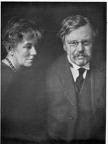But it is a thesis too radical for our times and one that no scientist is likely to feel the courage to entertain.
It is geostasis. In short, a stationary Earth or, at least, a revolving but not orbiting Earth.
Nuts? Well, maybe.
Yet this would most easily explain Airey’s failure, the Michelson result and the Sagnac result and would dispense with any need to posit a constant for the speed of light. Nor would it require any of the contradictions of SR and GR. Curved space-time reverts to the academic museum of curios from whence it ought never to have escaped.
One past astronomer of international fame, faithfully reproducing what he observed in the night sky, did produce a model of the solar system which accords completely with what is observed.
He was the famous Danish Astronomer and mentor of Johannes Kepler, his pupil, namely Tycho Brahe, later Astronomer-Imperial to the Holy Roman Emperor.
_-_Google_Art_Project.jpg) |
| Tycho Brahe was a Danish astronomer of Rennaissance times. His system - even today - accords most accurately with what you see in the night sky. |
Kepler inherited all Tycho’s calculations but later falsified them to fit his new-fangled ellipse theory.
Nevertheless, it is the Tychonian system which, even today, remains the most true to what is observed in the night sky. It explains, for instance, the apparent reversal of motion of Venus and Mercury which the Copernican system explains only by the use of epicycles.
There is a common misconception that the Copernican model did away with the need for epicycles. This is not true. The Copernican model could not explain all the details of planetary motion on the celestial sphere without epicycles. Indeed, the Copernican system required more than the Ptolemaic system. However, the Tychonian system requires none at all.
In the Tychonian system, the Moon and the Sun rotate around the Earth. Mercury, Venus, Mars, Jupiter, and Saturn rotate around the sun but the orbits of all save Mercury and Venus encompass also the Earth. Thus, from the perspective of the Earth, both Mercury and Venus appear, at one point in their sub-orbit round the Sun, to go into reverse as the Sun orbits the Earth.
But what of Stellar Parallax? This was the proof, surely, of heliocentrism?
Well, no.
Distance measurement by parallax is a special case of the principle of triangulation. The careful measurement of the length of one baseline can fix the scale of an entire triangulation network.
In parallax, the triangle is extremely long and narrow, and by measuring both its shortest side (the motion of the observer) and the small top angle (the other two being close to 90 degrees), the length of the long sides (in practice considered to be equal) can be determined.
Two different measurements are taken six months apart, to allow for the presumed 186 million miles that the earth travels in its alleged orbit during that time period, from one side of the sun to the other.
Parallax is the appearance that stars move in the sky in relation to each other, or in other words, more “distant” stars shift every six months in relation to nearby stars that are allegedly closer. This is put forth as the evidence that the earth revolves around the sun annually.
 |
| Stellar parallax proves only that either the Earth is moving with respect to the stars, or that the stars are moving with respect to the Earth. In other words, it simply does not resolve the issue. |
There is a problem however: most of the star data that is catalogued by NASA exhibits negative parallax, in other words, most of the stars do not shift in the direction they need them to in order to support the heliocentric model.
In fact, however, stellar parallax proves only that either the Earth is moving with respect to the stars, or that the stars are moving with respect to the Earth. In other words, it simply does not resolve the issue.
In reality, it may be that the relationship between Sun and Earth, governed by multi-body dynamics with gravitational forces interacting to produce regular movement, cannot be determined by those who inhabit one of the bodies, without some static background which, of course, does not exist.
This is perhaps the reason why the late Professor Fred Hoyle, another Astronomer-Royal, felt able to say that the heliocentric model is as good as any other but no better (The Intelligent Universe, page 17).

Sir Fred Hoyle, Astronomer-Royal, felt able to say that the heliocentric model is as good as any other but no better.
Science can hypothesize and demolish an hypothesis but science cannot dogmatize. Doubts remain about each of the planetary system hypotheses and they cannot be resolved by refernence to unscientific dogma.
In matters of science, where there is no room for dogma, no final “court” and no final magisterial authority, the received wisdom is even more vulnerable to disproof. Yet many hypotheses have been treated as a kind of Delphic Oracle above and beyond any kind of challenge.
The result is that the real truth, whatever it may be, about the motion of the planets will, for the time being, remain obscured by wholly inappropriate scientific dogma rather than real science.
A generation that slavishly follows the media and fashion is unlikely to see the point.
Perhaps, after all, that much-maligned philosopher, theologian and scientist, St Robert Bellarmine, has still much yet to teach us?
...



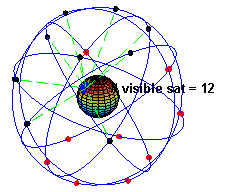



.jpg)
















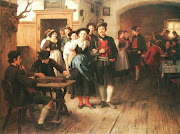





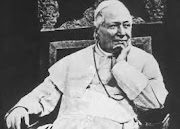




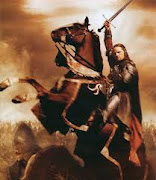

_-002.jpg/220px-Circle_of_Anton_Raphael_Mengs,_Henry_Benedict_Maria_Clement_Stuart,_Cardinal_York_(ca_1750)_-002.jpg)
